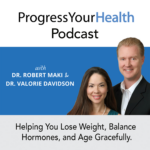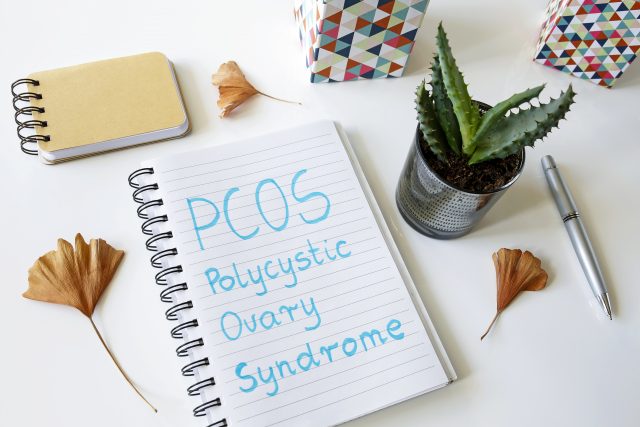

In this episode of the Progress Your Health Podcast, we are going to talk about PCOS. I know our last podcast was, PCOS, Questions to Ask your Doctor. We are still going strong on our PCOS information. But we are going to do things a little different than we have. We are going to do a five-part podcast series about PCOS.
PCOS stands for Polycystic Ovarian Syndrome. It is not a disease but considered a syndrome. From the name, polycystic ovarian syndrome, it is easy to assume there are multiple cysts on the ovaries. But in fact, many women with PCOS do not have multiple cysts or any ovarian cysts. As a general statement, in PCOS, there are hormonal imbalances that can cause unwanted symptoms and conditions. That is why we consider it more of a spectrum as some women can have nearly most of the criteria of PCOS and other just a few symptoms.
What are the Hormonal Imbalances present in PCOS?
Common PCOS Symptoms:
Multiple Ovarian Cysts:
Period issues:
Infertility:
Weight gain:
Acne:
High Blood Pressure:
Irritability:
Hair loss:
Hair growth:
Now, remember, we are humans. And humans grow hair. It is perfectly normal to have hair growth on your body. I have a couple of chin hairs that pluck every so often. And my ethnic background means I shave my legs pretty often. But in PCOS the hair growth is a little more descript. Also called hirsutism is to a higher degree. The hair is dark and coarse, and there is more of it on the body. This is usually attributed to the higher levels of testosterone and DHEA.
Thank you for being a part of our Progress Your Health Community! Stay tuned for the next episode of our five-part series on PCOS: How PCOS Can Be Detected.
.
The post What Does PCOS Look Like? | PYHP 061 appeared first on .
Discover the common and unfamiliar symptoms that you might be experiencing. Get access to cases of real women with hormonal conditions.

In this episode, we return to a listener’s question regarding thyroid dosing in perimenopause. In our previous episode, we answered Tracy’s question about taking estrogen in perimenopause. Tracy also asked us an additional question about her thyroid doses. Tracy does not have a thyroid gland and has been noticing her dose is continually increasing as […]
In this episode, we discuss a listener’s question regarding perimenopause and estrogen hormone replacement. Tracy is concerned because she is still having a period but also has symptoms of low estrogen. She is not sure if she is a candidate for estrogen therapy since she is still cycling. Tracy’s Question: Hi- you’ve discussed in past […]
In this episode we discuss Jenell’s question she submitted on our website (Ask the Dr). Jennell has been having terrible anxiety since entering menopause and it is really affecting her quality of life. Jenell’s Question: Since starting menopause, I’ve had debilitating anxiety, especially bad in the morning. By evening, It practically goes away. I’m 54 […]
In this episode, we discuss a listener’s question. Amanda is 50 years old and starting to have menopausal hot flashes and weight gain. However, she is most concerned about the heart palpitations she is having. Amanda has had a cardiovascular workout and does not have heart disease. Most people might not be aware, but feeling […]
In this episode, we discuss a listener’s question about perimenopause. ‘Maggie’ is in her 40’s and experiencing severe insomnia with anxiety. She has tried supplements and different doses of progesterone with minimal results. She is having so many ups and downs with her insomnia, anxiety, and hormones. She is wondering how long this is going […]
In this episode, we talk about Mary’s hormone concerns after ovarian failure. She is only 34, and in the last 7 years since her ovarian failure has tried many hormone replacement options, all without the success she was looking for. Let’s Read Mary’s Question: When I was 27 years old I was diagnosed with iatrogenic […]